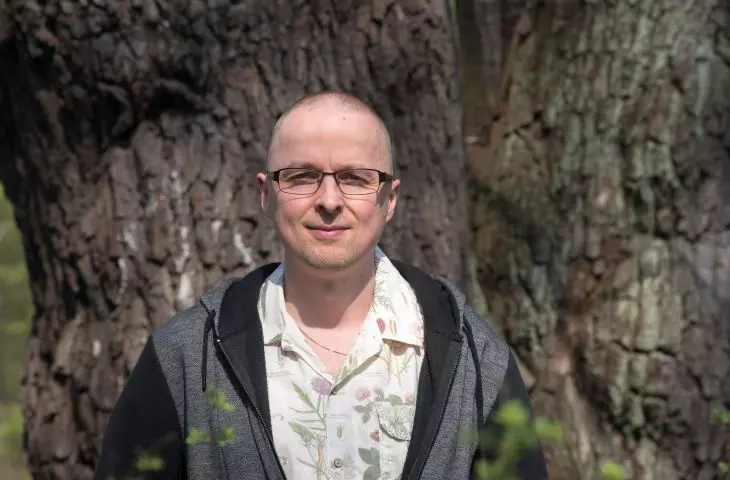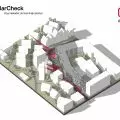The article is from A&B issue 03|23
Concrete is cool, but I prefer greenery. The issue of urban greenery, particularly trees, must be looked at broadly. I would mark three important subject areas here.
The first is to consider each case individually, not only from the point of view of natural values, but also from the point of view of cultural, functional and aesthetic, i.e. compositional and landscape values. Trees in cities must first and foremost be safe for people and property. When performing an analysis and answering the question of whether a particular tree is worth fighting for, all these aspects must be taken into account. The answer is the result of projected benefits and costs and risk analysis. Also key here are the (ecosystem) services provided by a particular tree, group of trees or, more broadly, a green area. Of course, mature or even aged specimens are very valuable to us - as habitat for birds, insects and other living organisms. However, they are more susceptible to toppling, crown dieback or branch withering. This necessitates maintenance work, thus generating further costs.
On the other hand, we should remember that in urban areas we are dealing with tree cultivation. An economic approach requires effective planning and use of available resources, not emotional decision-making. Unprofessional greenery management, numerous cuttings, lack of new plantings and the aforementioned concretization have forced community initiatives that often focus on protecting all trees. This is extremely valuable, but if we look at them as a crop, in the cold, it will be easier for us to analyze all the aspects I mentioned.
For me, the limit of keeping a particular tree in the city is the very high cost of maintenance relative to the cost of new plantings. We are talking here, of course, about the situation when we maintain trees that are dying, whose health is deteriorating as a result of changing habitat conditions or progressive climate change. This process is actually irreversible. From an economic point of view, it is much better to replace trees with new ones, necessarily in conjunction with improving habitat conditions for subsequent plants. Often such tree replacements also include rainwater management, expansion of biologically active areas and introduction of a layer of undergrowth with significant biodiversity. One might be tempted to say that modern urban cultivation is all about improving habitat conditions. What matters is not only what kind of tree we plant, but also whether we collect enough rainwater, introduce new companion plantings, i.e. shrubs or vines that are ground cover plants, or other types of benefits. I would call this a comprehensive look.
It is also important to remember that the cultivation of trees in cities assumes a certain longevity. Trees in the road strip perform specific functions, they are an integral part of it. It should also be assumed that they have a certain lifespan - from thirty to fifty years - and then, when the cost of maintaining them in a safe condition becomes too high, replace or replant. This is common practice in countries such as the Netherlands and Germany.
The third issue is the rationality of the measures taken. In concretosis, the problem is not the concrete itself. Concreteosis is a state of mind when we try to take shortcuts or bad compromises without thinking about the future. In the average city parks, we don't have shrubs or ground cover vegetation. They are too intensively maintained, too often mowed. Despite the lack of concrete, the natural effect is very similar. Land managers should think about the legitimacy of the treatments performed, both in terms of maintenance and investment.
Łukasz Dworniczak - landscape architect, president of the Lower Silesia Branch of the Landscape Architecture Association
© Private Archive
We talk a lot about removing concrete, but we don't ask ourselves whether the costly removal of concrete and the introduction of greenery and trees in its place from the point of view of the functionality of the space will be rational. Market squares are a good example. These are often venues for mass events or fairs. Habitat conditions are practically non-existent on them, and they need to be created anew, along with an irrigation system. In this case, we can not rely on rainwater, as it is contaminated with sodium chloride. Often the introduction of greenery is only symbolic, and at the same time it is a very expensive investment. This does not change the fact that it can be an important green manifesto for residents. Greenery should be designed as an integral part of the space.
Instead of introducing greenery by force in difficult locations, one should consider introducing it in backyards, that is, where residents need it most. It is also worth considering alternative forms of it, such as climbing plants on facades, garbage shelters and poles.
The shape of the space is a picture of the thinking of land managers and designers. The modern standard is, or at least should be, the introduction of greenery and shade zones, rainwater harvesting, the creation of friendly meeting places, including simple solutions that will be maintained by the residents themselves, such as a bench or resting place in a shady spot next to the sidewalk, which for a senior citizen returning with shopping is a place of respite.
The problem is not the concrete itself, but the massive introduction of architectural solutions that heavily transform the space. Historically, parks didn't have concrete edging or concrete foundations under benches. There wasn't as much lighting. Obviously, a dark park is more dangerous, so zoning is a good solution, i.e. introducing lighted areas and those that are more nature-friendly.
We need to balance the ability to use concrete with the ability to use greenery, that is, to design, introduce and maintain it.















